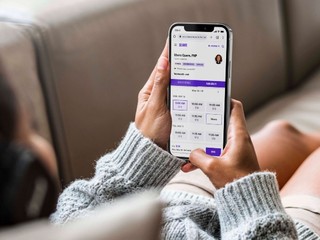
David Goldhill, co-founder and CEO of Sesame, on VatorNews podcast
Sesame is a direct-pay healthcare marketplace for medical care services
Steven Loeb speaks with David Goldhill, co-founder and CEO of Sesame, a direct-pay healthcare marketplace for medical care services.
Our overall goal is to understand how technology is radically changing healthcare: the way we screen, treat and measure progress and outcomes. How we’re empowering the consumer. Whether we’re creating productivity that drives economic costs down? And how tech advancements change the role of the doctor.
Highlights from the interview:
- Goldhill spent most of his career in media and entertainment, where he built the Game Show Network, and he was President of Television at Universal. His interest in healthcare came about because of his father's death from a hospital error. That caused him to think about what the high rate of error in such a heavily regulated industry told us about health care really works. He wrote an article in The Atlantic and books around the same theme: that financial security that we have given up so much for, by turning the consumer role in healthcare over to insurers and governments and big intermediaries, may not be helping us, and that it may not be driving the kind of improvements in quality and ease and use and cost that we would expect.
- Most people in healthcare think it's fundamentally different from everything else because it’s so important, and it often involves matters of life and death. But if you've been in other businesses, you recognize that a lot of the things that forced you to be better at what you did, including competition, don't exist in healthcare. When you think about how important healthcare is, you should also think about how the very complexities we've built in the system actually undermine the quality of care you receive.
- In every other sector of life, technology makes things cheaper and better; only in healthcare it makes it better and more expensive, and that's because of the way we've structured the industry. Unless you get at those structural issues, you're never going to solve the problem. There is no way to make health care accessible on an affordable basis if healthcare itself continues to get more and more expensive, and there's no reason that technology shouldn't be driving the cost of care now.
- Insurance for checkups or for small conditions drives up the cost, which is why Sesame doesn't allow insurance on the platform. As a result, its prices are meaningfully lower because a typical independent provider thinks that taking insurance costs them somewhere between 20 and 40 cents on the dollar in cost. Insurance adds a lot of complexity, a lot of bureaucracy, and a lot higher cost to every single transaction, which is why, in the private economy, it's only used for things that are rare, major and catastrophic.
- On Sesame, patients are choosing their doctor, and it has a high repeat rate: over half of the people who have used Sesame have already used it more than once, many people use the same doctor over and over again. Others are more transactional about it and just want someone who can see them this afternoon, and are less interested in seeing the same person. The key to Sesame is that it is a patient choice, not an insurer choice.
- On average, prices on Sesame tend to be somewhere between 30 to 65% below from even an in network price for most services, which is why they like to say, “pay half, be whole.”
- Just under 40% of the patients on Sesame are uninsured, and about 50% are on high deductible plans. The final 10% are convenient customers, who use it because it’s the easiest, most accessible way to find somebody to see quickly and get the service.
- COVID occurred just as Sesame was about to launch its service in Houston, and the original thought was to build on a market by market basis. COVID shut down every single medical office that has signed up to serve patients in Houston, which forced the company to go offer video services on Sesame, which made it national instantly, because doctors were all over the country then could sign up. So, Sesame was a national service before it was a local one, that was not the original plan. It also took something that was going to take five years, to teach people they can actually buy healthcare on the internet, and made it national in about one week.
Thank you to our sponsors: Advsr; a boutique M&A advisory firm. They wrote the book on startup M&A called "Magic Box Paradigm: A framework for startup acquisitions." Go to Amazon.com to get your copy. Also thanks to Stratpoint, an outsourced engineering firm and Scrubbed, an online bookkeeping firm. If you need affordable and quality engineering and bookkeeping, check them out. We highly recommend them!
Subscribe to our podcasts to get our interviews and shows as soon as they're published!

Mitos Suson
I produce Vator Events and enjoy the challenge. I am learning and growing a lot, being involved with Vator and loving every moment of it!
All author postsRelated News
